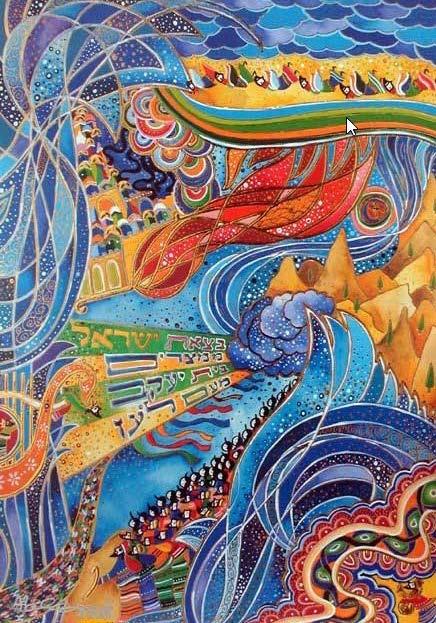
4 minute read
Remembering Amalek
from HaSofrim: May 2020
by AUJS
David Wein
The decimation of European Jewry by the Nazis in World War II Europe brought upon the tragic destruction of many renowned Yeshivot in Europe, such as Slabodka, Telz, Radin, Mir and many more (some of these yeshivot did relocate in American and Israel). Survivors were confronted with the major task of rebuilding Torah around the world following their devastating experiences.
Advertisement
Rebuilding Torah was a task which took place primarily in the US and Israel, with remnants of the old world seeking to proliferate the great Torah traditions of Europe. In America, the Torah scene was a significant contrast to that of pre-war Europe. Rabbis were confronted with conflicts over whether a mechitzah should still be part of the Shule, the rise of Conservative Judaism and threats of assimilation, emblematic of an environment with distinguishable values and focuses to that of the European Torah scene.
Concurrently, survivors who found themselves in Eretz Yisroel were confronted with a secularist Kibbutz movement, the challenges of building a new society from the ground up and constant fears of war from neighbouring countries.
On balance, it is evident that rebuilding Torah in the backdrop of World War II was nothing short of a herculean task. In contemporary times, and with the benefit of hindsight, we can paint a Torah landscape which rebuilt is unprecedented and surely unfathomable for those who suffered through the Nazi’s.
So, how did it happen and what can we learn?
Found in post-World War II America were seminal Torah figures such as Rabbi Joseph B. Soloveitchik, Rav Aharon Kotler, the Lubavitcher Rebbe, Rav Moshe Feinstein, Rav Yitzchak Hutner and many more legendary gedolim. An observation can be made about each of the aforementioned gedolim. Each had a unique impact on the Torah world, which we all benefit from today. Profoundly, they represented a link to the Gedolim of Europe, enabling American Jewry to transcend time and joint the chain in our Mesorah.
Take for example, Rabbi Joseph B. Soloveitchik (‘the Rav’) zt’l related the following about his experience giving shiur:
This profound account reveals the Rav’s affinity for his mesorah (tradition) in learning, a deference of profound proportions in that he relies on them, as no shiur can be delivered
A group of child survivors behind a barbed wire fence at the Nazi concentration camp at Auschwitz without Reb Chaim. However, the Rav does something so profound in this shiur, he imparts a gift to his talmidim:
And here is where the Torah is exported from pre-World War II Europe to the modern world:
What the Rav is describing above is the bringing of the modern Jew into the Torah world, enabling them through learning the sacred texts of our predecessors to engage in Torah in a manner analogous to the legendary Yeshivot of pre-World War II Europe. Moreover, this is an example, albeit one which is of unrivalled profundity, of the renaissance of Torah brought to the world following the Holocaust. was similarly done in other legendary Torah institutions such as Merkaz HaRav (although it was created pre Holocaust), BMG in Lakewood, Mir in Israel, Yeshivat Chevron, Torah V’Daas and innumerable number of Hesder yeshivot and midrashot, which have revolutionised Torah study for women, in Israel.
However, the above simply provides a romanticised picture of a post-Holocaust classroom, failing to capture the difficulties experienced by those seeking to build Torah and Torah institution. The nascent days of any institution were rarely characterised by fame or glory, rather they were often synonymous with profound self-sacrifice, such as the Rav taking personal loans to pay teachers at Maimonides or Rav Nossen Tzvi Finkel zt’l driving around to fundraise for Yeshivat Mir notwithstanding his tremendous suffering from parkinsons disease.
This self-sacrifice has conferred onto us the tremendous benefit of living in a world where Torah study is engaged in rigorously with Jews across the hashkafik (outlook) spectrum engaging with Jewish texts, writing sefarim and creating remarkable Torah institutions.

Rav Osher Weiss relates the story of when his father encountered the Klausenberger Rebbe in Aushwitz and related to the Rebbe that he had undertaken significant efforts to be with the Rebbe to learn with him. The Rebbe ominously responded that such luxuries are unavailable in Aushwitz, to which his junior remarked “if we cannot talk in learning, how will we prevail”.
The profundity of this statement is overwhelming, bearing an important message for the contemporary Jew. Whilst many of our predecessors were subject to the horrors of the Holocaust, it is our dialogue with the past, as described by the Rav that empowers us to rebuild our sacred traditions. However, it does not stop there, it enables us to engage with our traditions like our forefather whilst concomitantly having a voice in that intergenerational dialogue, transcending and overcoming the terrible effect the Shoah had on the Torah World.









